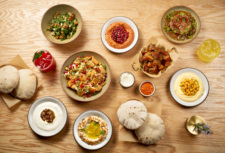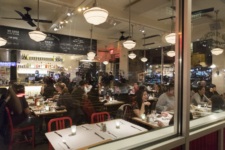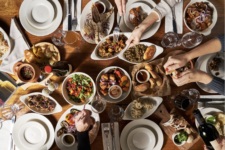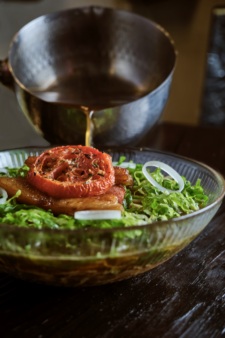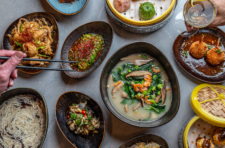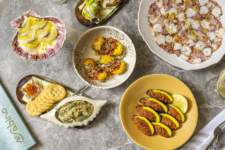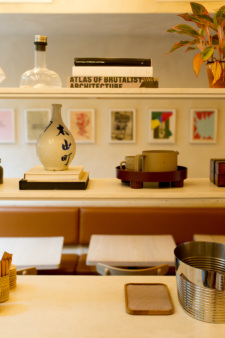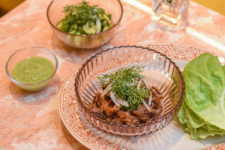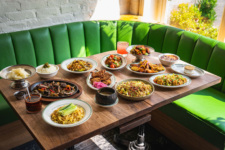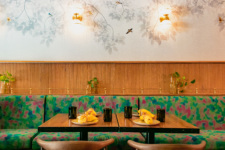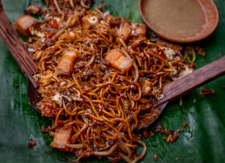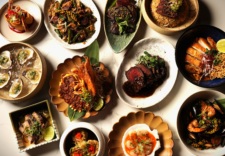
How Alaluna Flips the Script on the Italian Steakhouse
At New York’s Alaluna Ristorante, which opened in March in Greenwich Village, seafood is getting the steakhouse treatment. There’s dry-aged tuna “bresaola,” bluefin lasagna, and bonito tartare on a menu that just so happens to be entirely pescatarian.
Chef Riccardo Orfino, of Osteria 57 and Alice, is at the helm, bringing lessons from his Italian childhood into the kitchen.
“I moved here to the United States nine years ago. My passion is for Italian food and cooking, of course. My family always cooked a lot, my mom always had a lot of people at home to cook for,” Orfino said. “When I was a teenager, I decided to go to culinary school.
We sat down with Orfino to chat about sustainability, freshness, and seasonality. Here, in his own words, are five essential dishes to order from Alaluna.


Bonito
“Steak” tartare style with egg yolk, cornichons, capers, pickled onions
We make this with incredible bonito that is flown directly from Japan. We age it for one week, and after that, we chop it as you would a steak tartare. We finish it at the table with the classic steak condiments — an egg yolk, cornichons, capers, pickled red onion, salt, and pepper. We serve that with a couple of pieces of grilled focaccia bread that we bake in house. Through the process of aging, the meat gets a lot fattier, so much more soft, and flavorful, because a percentage of water goes away during the aging process. The fat inside gets stronger and more present, and that’s what makes the steak so succulent and good.
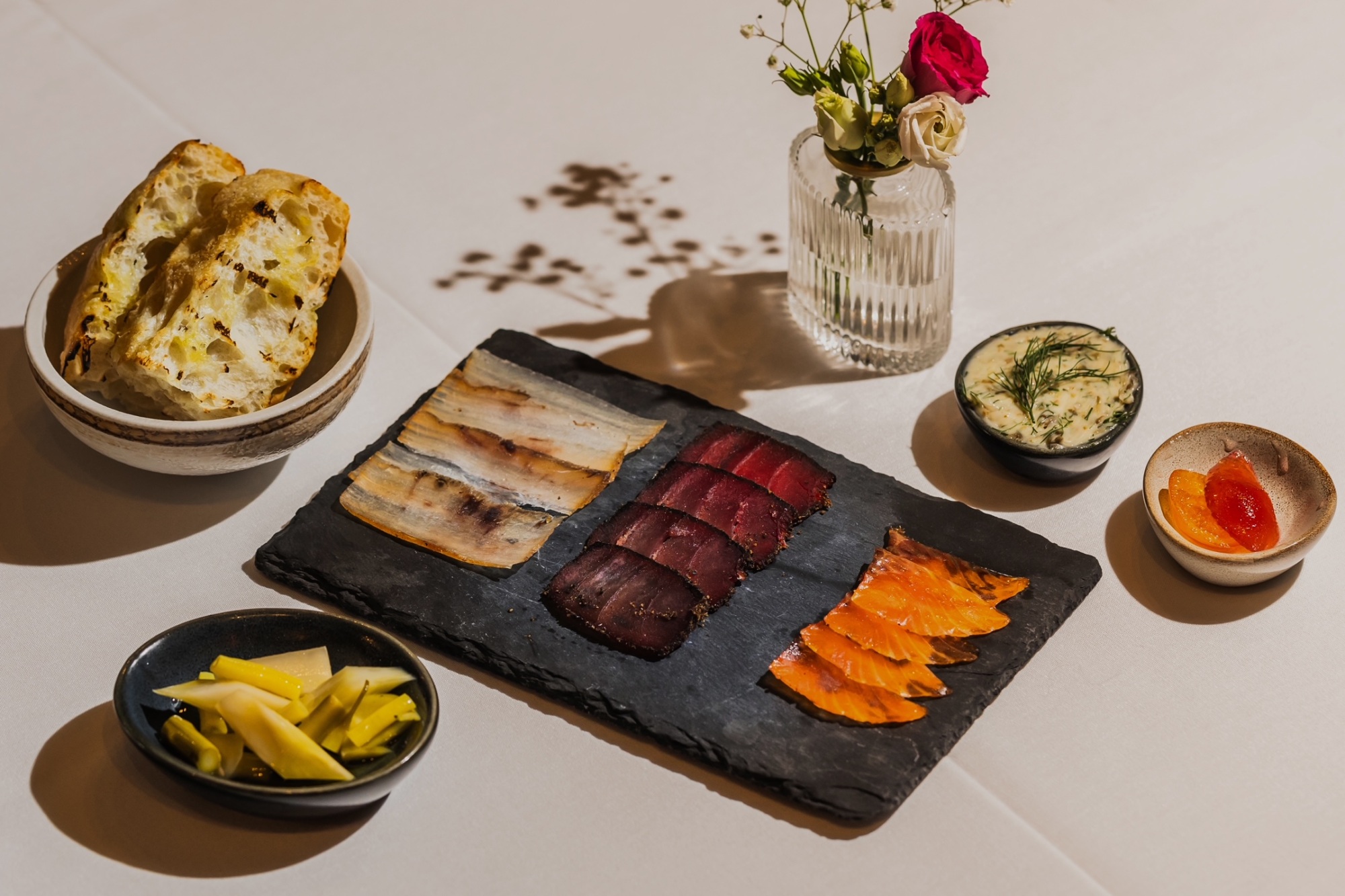
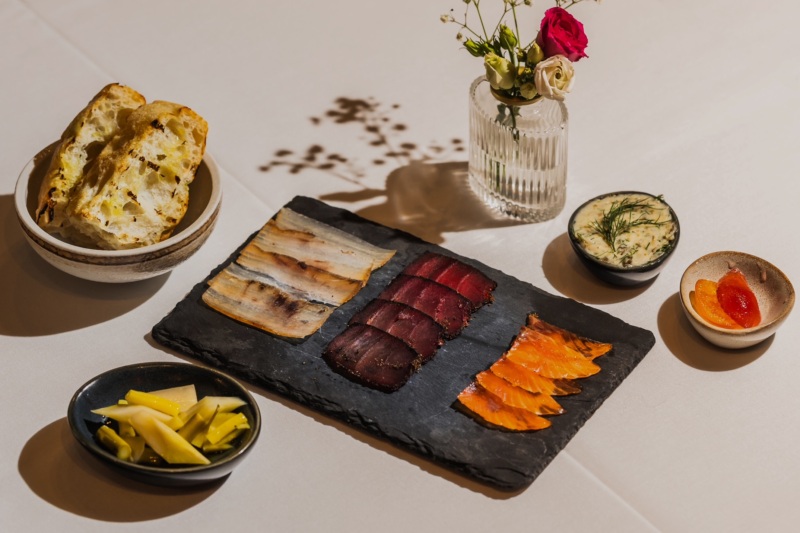
Seacuterie
Tuna “bresaola” (Montauk), four weeks dry aged and cured; hamachi “bacon” (Australia), five weeks dry aged and cured; steelhead trout (Upstate New York) six days dry aged and cured; paired with a chef’s selection of sides
I won’t say we’re the first ones to do this, but maybe the first in New York or on the East Coast. We’re treating different types of fish in the same way that you treat meats or salumi.
Every fish has a different rub and curing time, as well as a different method of curing and aging. I come from a part of Italy where the tradition of curing meat is very strong. I remember having our whole pig during the winter and making all of the salumi, aging and curing it in the cantina.
The idea was to try to do that with seafood. We’ll change the program based on availability. Right now, for this month, we’re curing three types of fish. We have the steelhead trout from Hudson Fisheries, an incredible farm in the Hudson Valley. We cure the filet in a rub with salt, sugar, different citrus, and dill. We marinate and age the fish for one week. This one takes less time; it’s ready a bit more quickly.
The second one is the tuna “bresaola.” It’s a bluefin tuna loin that we rub with different spices. We lightly smoke it in our smoker and then hang it for between four and five weeks depending on the size of the fish. It’s important to stay on top of them, because humidity and temperature can change things.
The third one is the belly of the yellowtail, or hamachi. We make a kind of bacon that we rub with salt and spices, and we smoke it a little bit harder than the tuna. We hang it for six weeks.
It all comes at the table with different ingredients that you can pair with your “seacuterie.” Right now, we have sweet and sour eggplant. It’s the first eggplant of the season, and it’s a bit vinegary and sweet. We have pickled vegetables from Norwich Meadows Farm, and a compound butter with Sicilian capers, fennel fronds, and pollen. We also serve a mostarda di Cremona. It’s fruit preserved in mustard oil, so it’s a bit spicy. Then, we also serve a couple of grilled slices of focaccia.
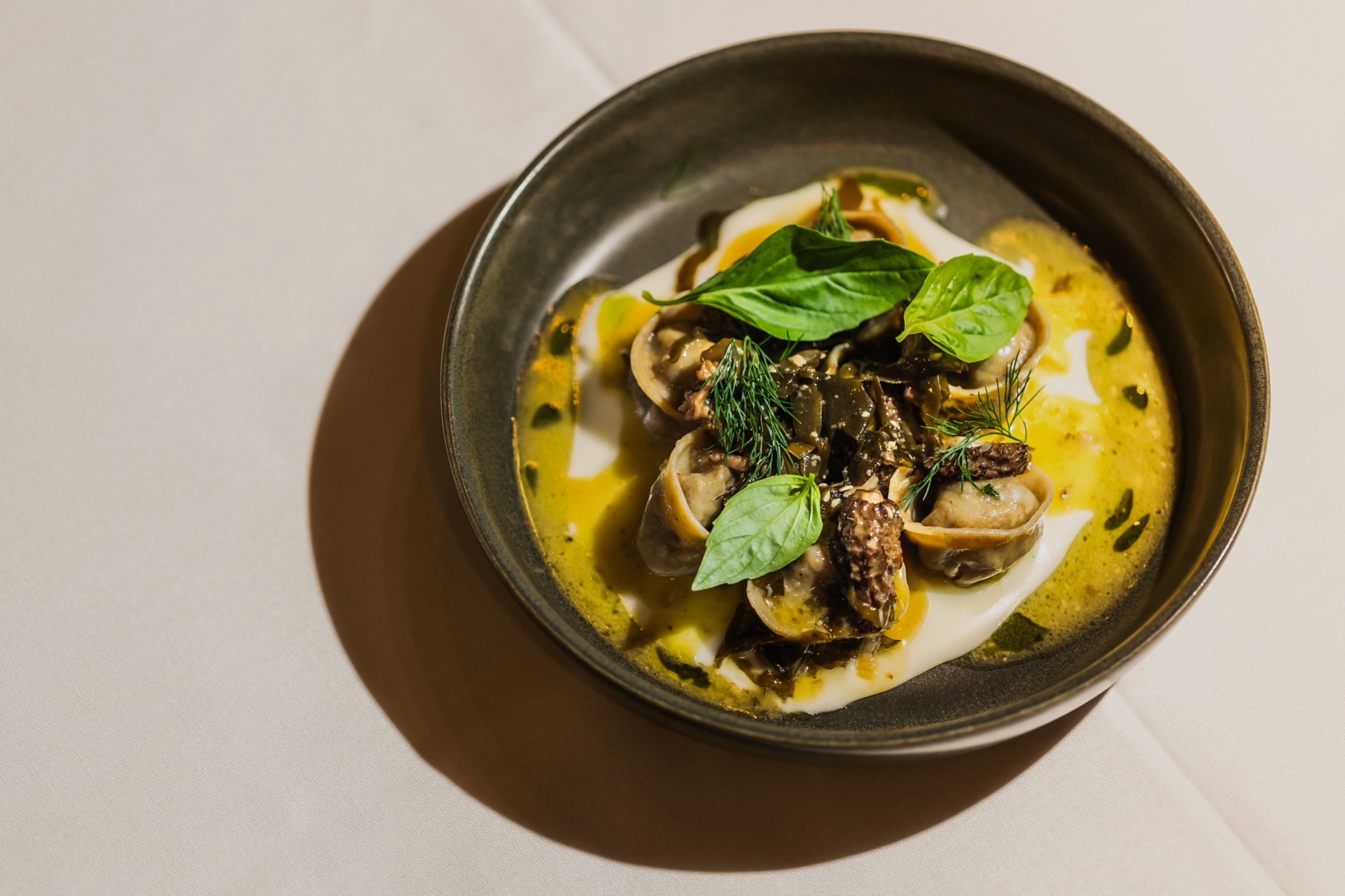
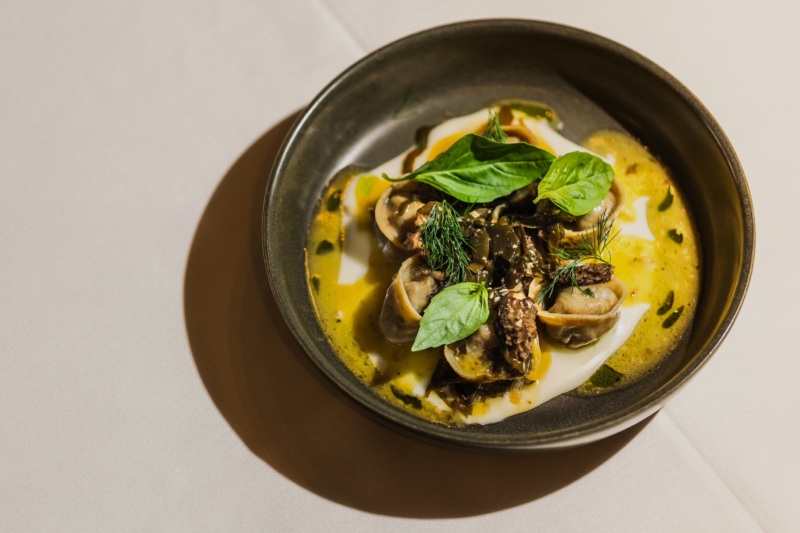
Mushroom Tortellini
Lion’s mane-infused dough, local and wild foraged mushroom, Parmigiano Reggiano broth, Maine fermented kelp
We use local mushrooms that come from upstate. It’s incredible; it’s from a community of friends and it’s called the Flowering Sun Ecology Center. It’s a group of guys farming mushrooms, and they respect the land and believe a lot of the same things as we do.
These guys have a lion’s mane mushroom. They make a powder for us, and we use it to infuse the pasta dough. The filling is made with different kinds of their mushrooms and a little bit of mascarpone cheese and a little bit of Parmigiano Reggiano. We cook the mushrooms in a mushroom stock. We put a little bit of mushroom stock sauce on the plate and finish the dish with some morels and fermented kelp from Maine. The kelp has an ideal, seafoody, umami flavor. It’s a super healthy dish and very sustainable and local.
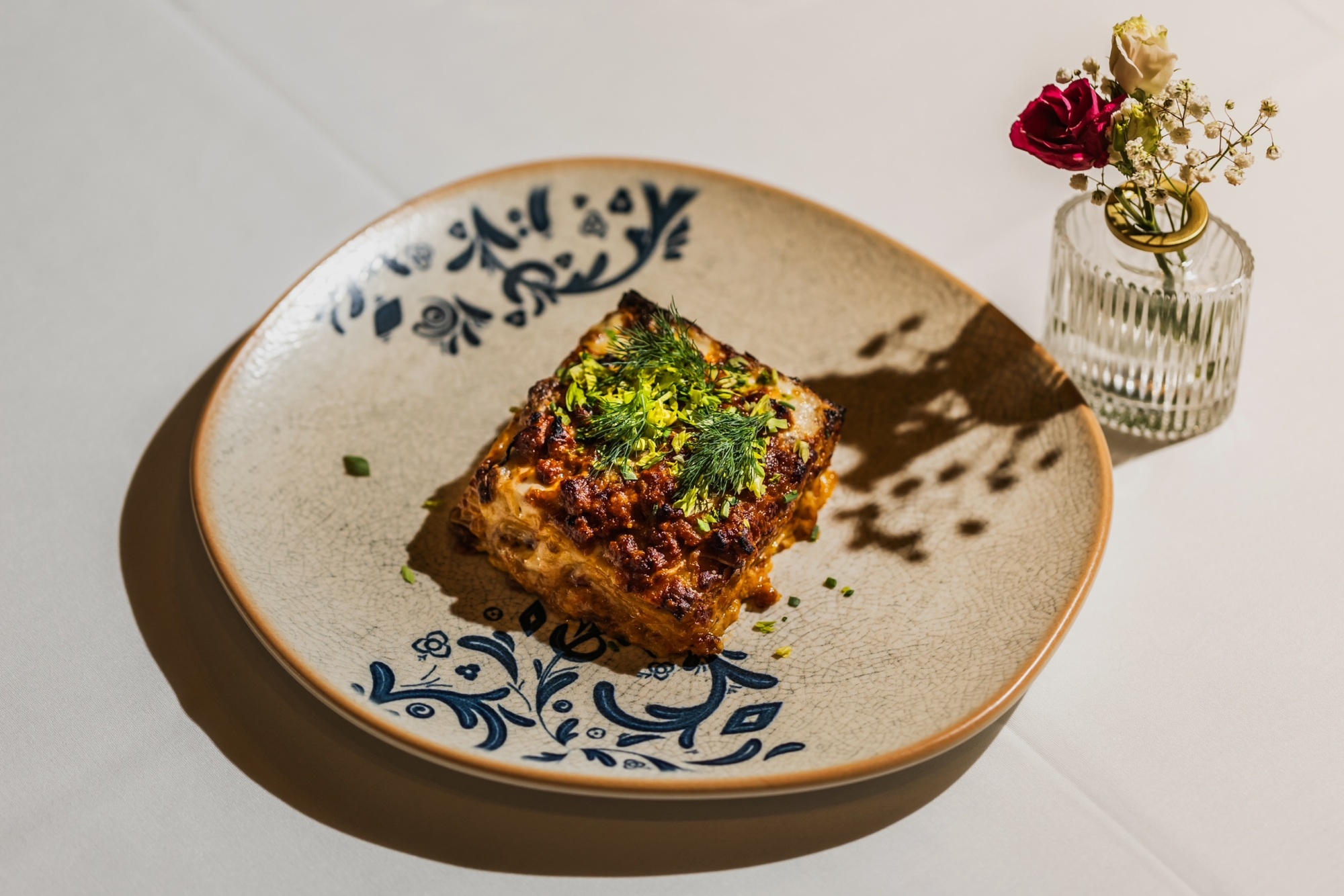

Bluefin Tuna Lasagna
Tuna “Bolognese” style
I had never seen this dish before [here]. We’re doing the same thing that you do with ground beef, but we’re doing it with tuna. The tuna gets ground in the same way. Then, it’s sautéed and cooked in the same way an Italian does Bolognese with meat.
The people that try it say that the most “wow” part is that it’s not fishy. Of course, you can understand it’s not a regular meat lasagna, but it’s something really interesting. We make our pasta sheets in house, of course, and we layer it with béchamel sauce, Parmigiano Reggiano, and we bake it in the oven until it’s golden and brown.

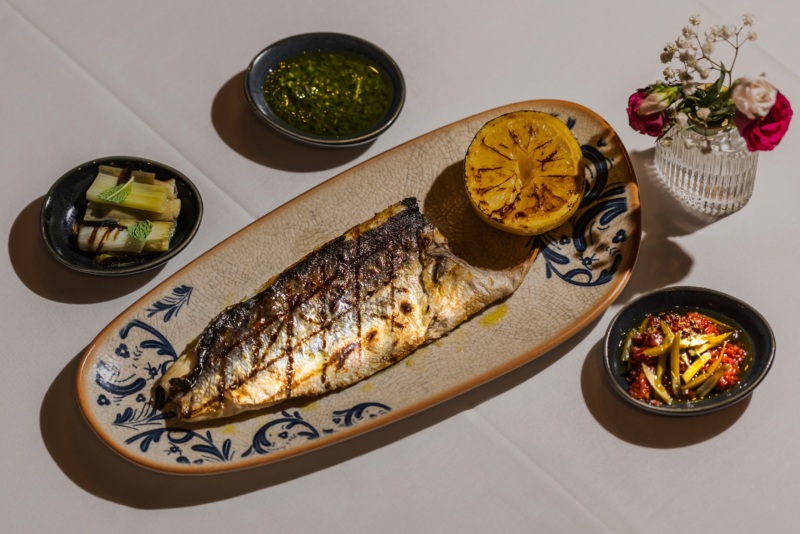
Branzino
Herbs salmoriglio, semi dried tomatoes, pickled garlic scape
We get good branzino from Italy. I wasn’t happy with the branzino that you usually get; I was looking for a more sustainable choice. We found an aquafarm in Italy, in the Tuscany region, in the city of Livorno. They arrive here super fresh.
We dry age the branzino for one week, and then we filet it and cook it over a charcoal grill. We serve the filet with a salmoriglio sauce. That’s a typical sauce that we use in Italy when we grill something, especially with fish; it’s made with fresh parsley, mint, Sicilian capers, lemon zest, lemon juice, fresh garlic, and olive oil. We put it on top of the fish skin and it stays on top, it’s not oily. The other half of the fish is covered with sun dried tomatoes chopped very thin, as a spread.
We finish the fish with pickled garlic scapes, now that it’s the season. They add a bit of acidity to the dish. The fish always comes with a little side of vegetables that can vary based on market availability, so right now we’re serving a little green salad dressed very simply and some braised spring onion that gets grilled, too.
Alaluna is open Wednesday and Thursday from 6 to 10 p.m. and Friday and Saturday from 6 to 10:30 p.m. They are closed Sundays through Tuesdays.
Discover More

Stephen Satterfield's Corner Table




